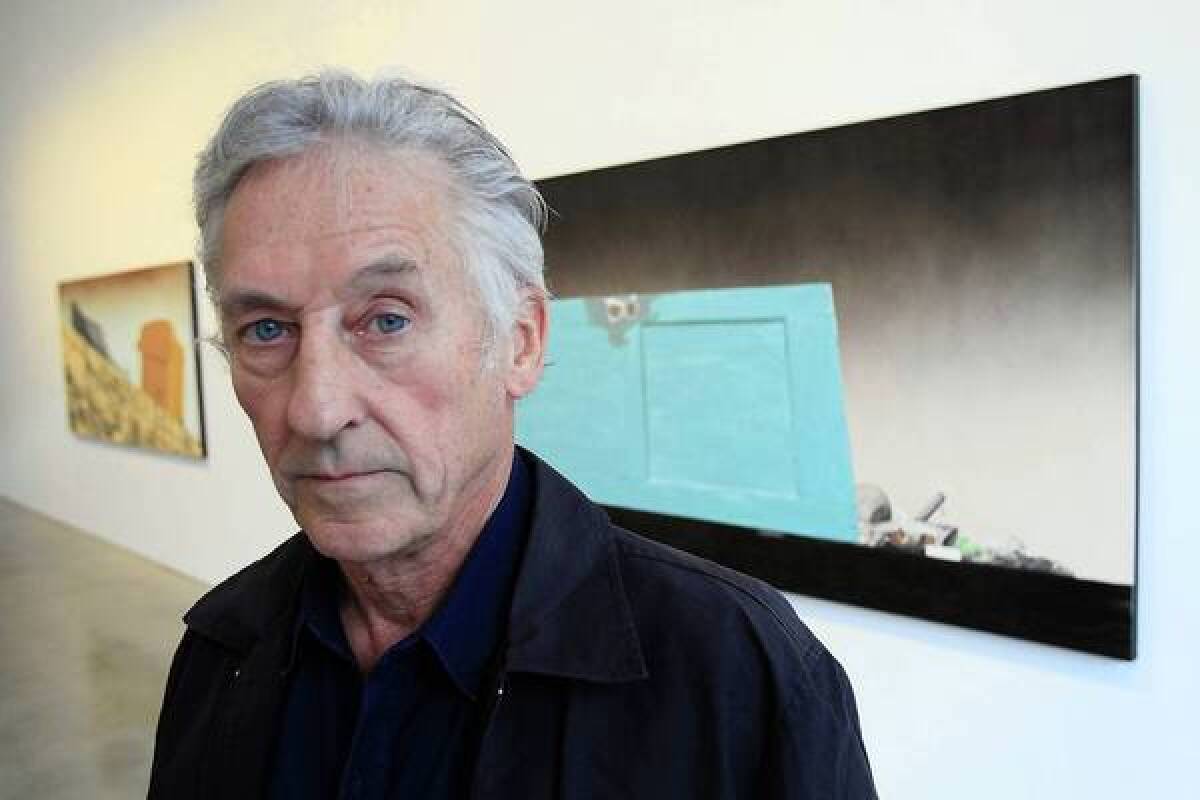MOCA: Ed Ruscha joins other artists in resigning from board

- Share via
Ed Ruscha has followed three other high-profile Los Angeles artists in a rapid flight from the board of L.A.’s Museum of Contemporary Art.
John Baldessari had been the first to exit, on Thursday, followed on Friday by Barbara Kruger and Catherine Opie, and now Ruscha, whose 1970 installation, “Chocolate Room,” and 1968 painting “Lisp” are among the signature works in MOCA’s collection. No artists remain on the board, which now has 32 voting members, down from 40 in February.
Ruscha submitted his resignation Sunday in an email to museum director Jeffrey Deitch. In a copy obtained by The Times, he wrote, “my defection may look obvious, but it will be all the better for the museum, which is on a course different than I imagined, but one I hope to support in the future.”
MOCA’s response came Monday in a two-sentence statement from Maria Arena Bell and David G. Johnson, co-chairs of the museum’s board: “We deeply regret the resignations of artists John Baldessari, Barbara Kruger, Cathy Opie and Ed Ruscha from the MOCA board. We hope that they will continue in important roles and provide valuable counsel for MOCA.”
Asked whether MOCA aims to fill the four seats with other artists, the co-chairs said that “there are no requirements to have a specific number of artists … on the museum board. Board development is a priority and we look forward to welcoming artist trustees, among other individuals to the board in the next twelve months.”
Last month, Ruscha had sent a brief email to The Times, responding to the forced resignation of longtime chief curator Paul Schimmel, a spark for the artists’ subsequent resignations from the board.
“I quivered when I heard the news. It was an involuntary reflex,” Ruscha had written. “Paul was a flashlight in the dark and now we can get ready for less sunshine.”
Schimmel’s ouster has been widely perceived as consolidating the MOCA board’s support for a style of exhibition that is Deitch’s signature — a populist approach that examines the intersection of visual art with wider pop-cultural phenomena such as celebrity, fashion and music, and has the potential to draw larger crowds than most narrowly focused contemporary art exhibitions.
The Times on Monday renewed a request to interview Deitch about his plans moving forward, but it was not granted. In an interview at MOCA in March, he said that he does not intend to abandon shows with high scholarly ambitions: “This is at the heart of what we do at MOCA, historical exhibitions that take lots of effort and years to put together, and [that are] expensive because works come from all over the world.”
MOCA has been unusual in welcoming artists onto its board while excusing them from paying the $75,000 annual dues expected of other voting trustees. The only artists listed on the board of the Los Angeles County Museum of Art are wealthy musicians — Barbra Streisand and songwriter Carole Bayer Sager.
In its announcement of a 2010 exhibition called “The Artist’s Museum,” MOCA noted that the show’s title was “based on a nickname that has been used to describe MOCA from its inception … on the premise that it should exist for the benefit of contemporary artists.”
A group of 150 artists provided the impetus for MOCA’s 1979 founding. They and collectors had felt disenfranchised after L.A.’s leading contemporary art venue, the Pasadena Museum of Art, succumbed to financial woes and was merged into what’s now the Norton Simon Museum in 1974, ending its contemporary art focus.
More to Read
The biggest entertainment stories
Get our big stories about Hollywood, film, television, music, arts, culture and more right in your inbox as soon as they publish.
You may occasionally receive promotional content from the Los Angeles Times.











